Shorebirds Sans Shore
(Header image: Buff-breasted Sandpiper)
Today’s title may seem like an oxymoron, but species defined as shorebirds spend a lot of time at places other than the shore, such as mud flats, marshes, agricultural fields and even forests. During migration, shorebirds stop at historically food-rich locations to refuel and rest on their annual trek. Even commercial sod farms.
Green. Horizon to horizon.
Small tractors scuttled around the fields and large flatbed trucks trundled along the narrow dirt road toward the outbuildings where they would be loaded with freshly cut sod. The green patches of lawn will then be hauled to newly built homes and businesses where they will be tossed onto recently scraped dirt. Copious amounts of water and fertilizer will be administered until the grass takes root. Homeowners and landscape companies will then spend hundreds of hours per year with mowers, trimmers, rakes, more fertilizer and more water in an attempt to keep the stuff green.
Meanwhile, back at the sod farm.
As vast swaths of green are cut and removed in preparation for the big trucks, all that dirt which is exposed turns to mud when it rains or when the fields are irrigated. The combination of mud and newly sprouting grass is a magnet for a diverse population of insects. Large numbers of birds know this. More than a few birders have also discovered this phenomenon.
Throughout the year, this commercial sod farm hosts from a few to several hundred shorebirds, with the largest concentrations occurring during spring and fall migration. A typical birding day a few weeks ago, for example, produced around 250 Least Sandpiper, 50 Killdeer, a dozen Pectoral Sandpiper, a few Semipalmated and Western Sandpiper, several Greater and Lesser Yellowlegs, a Spotted and Solitary Sandpiper and a couple of Wilson’s Snipe.
Occasionally, an uncommon species makes an appearance. Our timing was good recently.
Just after sunrise, we cruised slowly along the paved county road adjacent to the sod farm. Not much to see. We turned onto the dirt road which leads to the farm’s operation center. Fortunately, this portion of the road is public.
Birds! Looking like ants at a picnic, waves of small sandpipers moved across the dew-covered grass snapping up insect morsels as they marched and hopped along. Most of what we could see were Least Sandpipers with a few of their larger look-alike cousins, Pectoral Sandpipers. Gini-with-the-sharp-eyes exclaimed: “That’s different!”
It sure was! Larger than the Least, not as round as the Pectoral, tawny-colored, a roundish head, an upright foraging posture. Buff-breasted Sandpiper! And there was a second one!
In years past, we have glimpsed this uncommon migrant at extreme distances through the spotting scope. Now, here were two feeding less than 50 yards from our “hide” (the car)! We enjoyed the next half-hour watching the pair feed along with several dozen other sandpipers. I caught a movement on the other side of the road and discovered a Spotted Sandpiper, still bearing the spots of its breeding plumage.
As our rare visitors flew to another part of the field, we moved down the road and found a few large puddles caused by recent rains. Here we watched Greater and Lesser Yellowlegs, a Stilt Sandpiper, Killdeer, Wilson’s Snipe, Semipalmated Plover and more Lesser and Pectoral Sandpipers feeding voraciously. A pair of Mottled Ducks appeared in some tall grass.
The Buff-breasted Sandpiper pair joined the group above and we couldn’t have asked for a better day at the sod farm! These amazing birds nest in the Arctic tundra and fly to the pampas of South America for the winter. An incredible journey! It has been estimated they used to number in the millions. Uncontrolled hunting in the 19th century and loss of feeding habitat along migration routes in modern times has reduced their population to probably less than 50,000. We feel very privileged to have spent a little time with them.
A portion of a flock of Lesser and Pectoral Sandpipers moving from one feeding location to another.

A rare treat, the Buff-breasted Sandpiper.


By far the most common shorebird in our area is the Least Sandpiper. Only 5-6 inches (12-15 cm) long, their “crouched” feeding posture and light-colored legs help separate them from Semipalmated and Western Sandpipers.

Pretty soon, this Spotted Sandpiper will be plain gray/brown above and plain white below.

We were fortunate to have both Greater and Lesser Yellowlegs feeding in the same area so identification was simplified. It can be difficult to judge size if the birds are alone and the best way to determine which is which is by their calls. Greater is 11-13 inches (29-33 cm) long and the Lesser is about 9-10 inches (23-27 cm) in length.
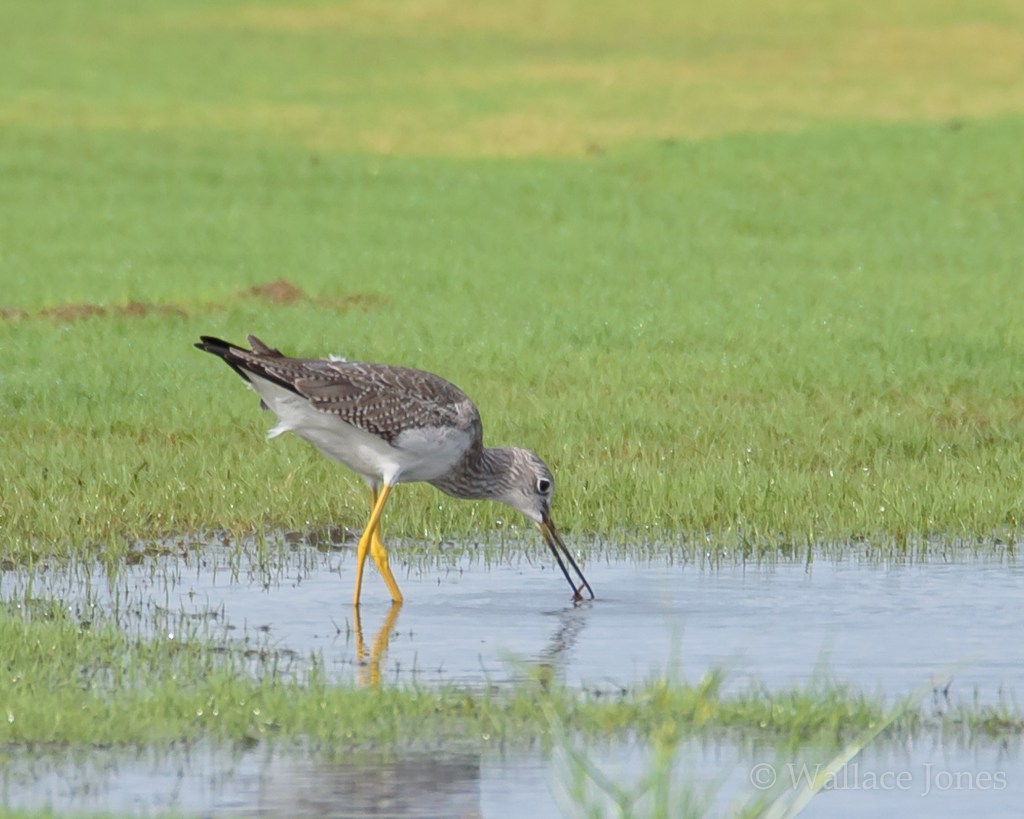

A Stilt Sandpiper is not a rare bird but is not very common in our area, even during migration. Here it is seen (on the right) with a Lesser Yellowlegs.

Pectoral Sandpipers look like large versions of the Least Sandpiper.

Although the quality of this photograph is not great, it shows the size difference between Least Sandpiper, Pectoral Sandpiper and a Killdeer.
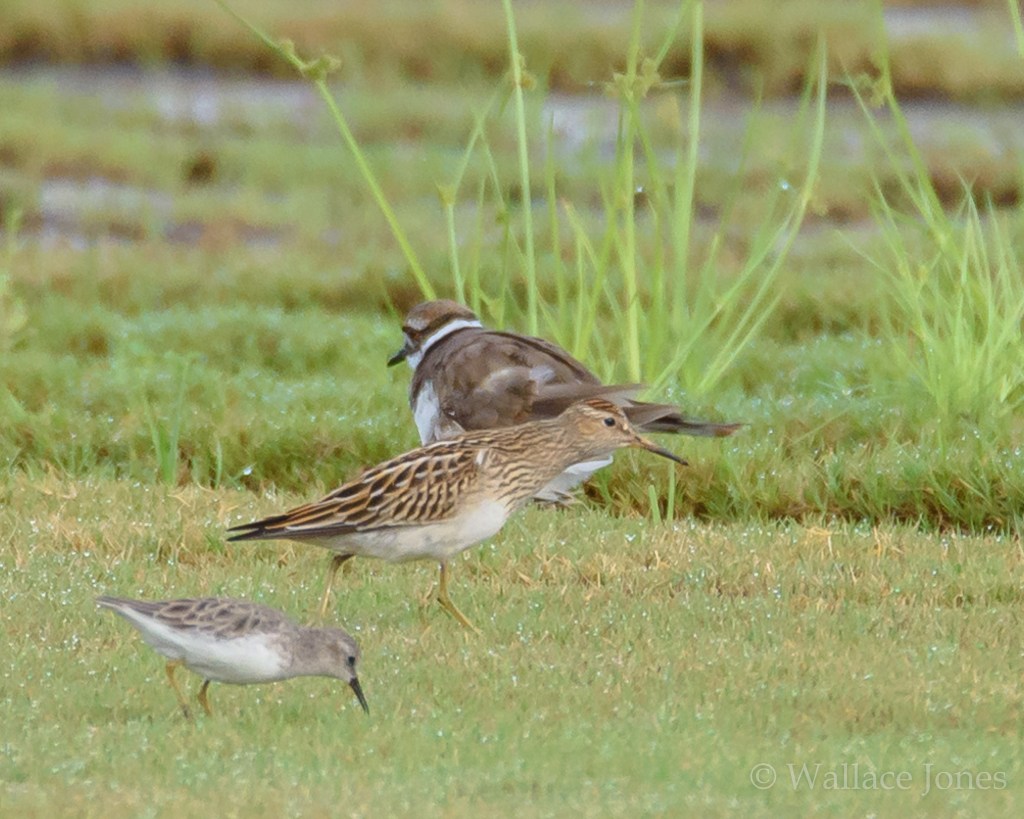
With a bill truly made for deep probing, the Wilson’s Snipe’s plumage can make finding them in a field of brown grass a real challenge.

Looking much different than the sandpipers, we found about a dozen Semipalmated Plover during the morning.
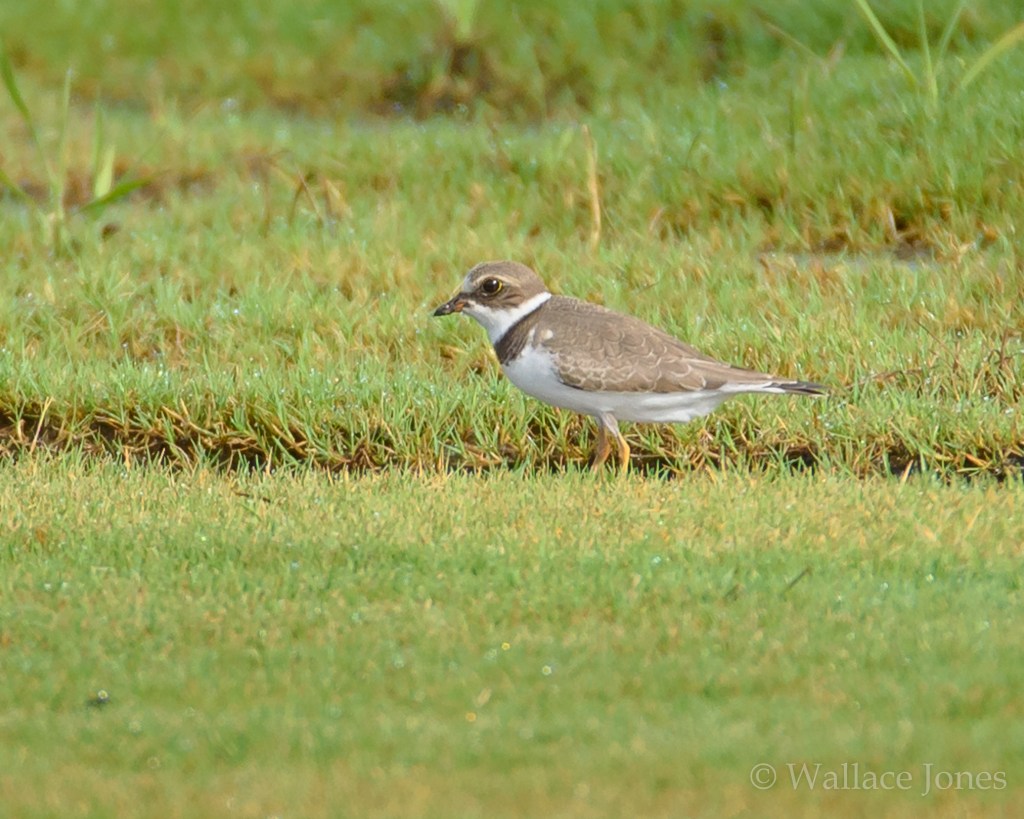
With an abundance of food available, shorebirds were not the only guests at the sod farm. Dozens of Red-winged Blackbirds arrived to enjoy brunch.
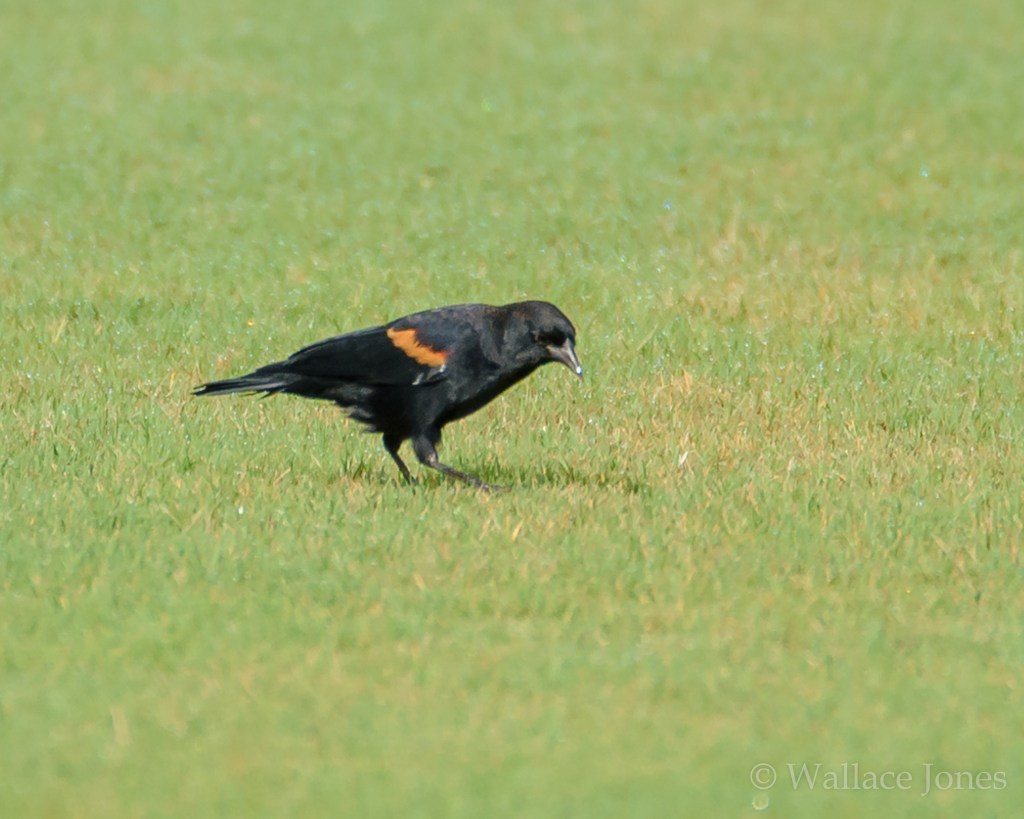
A juvenile European Starling was part of a larger group which also found the fields to be an acceptable foraging location.
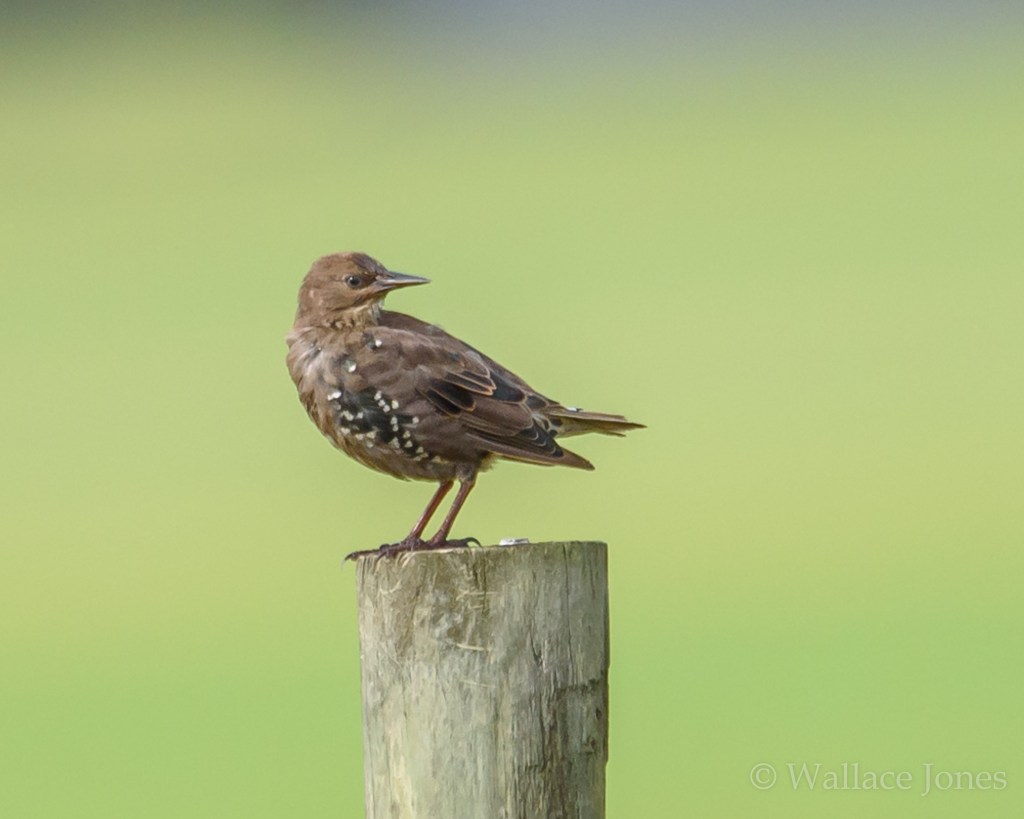
Trying to remain hidden in a section of taller grass with standing water, a pair of Mottled Ducks added to the variety of our day.

It seemed almost like cheating to be comfortably seated in the car and being able to observe so much activity and diversity all around us. Almost. We can’t wait to do it again!
Enjoy your search for a natural place and come back for a visit!
The beauty of your photography .. the unique birds Sandpiper, Plover, and Killdeer their pictures are recorded clearly.
Seeing these photos as if invited to go on an adventure directly to the location of their eating ground.
Greetings.
LikeLiked by 1 person
The beauty of your photography .. the unique birds Sandpiper, Plover, and Killdeer their pictures are recorded clearly.
Seeing these photos as if invited to go on an adventure directly to the location of their eating ground.
Greetings.
LikeLike
Thank you very much for such kind remarks, Himawan!
You are invited to go with us on future adventures, too!
LikeLike
Wow Wally, what a great trip – so many different birds! All your photos are great, but I really like the Buff-breasted Sandpiper ones.
LikeLike
Thank you, Ed. They cooperated for a change!
LikeLike
Your rich knowledge of birds is something to be admired. Another wonderful collection here! Super amazing to see the buff-bellied sandpiper. Thanks for sharing! Happy clicking.
LikeLike
Thank you for dropping by! If those little balls of feathers will hold still for a second, I’ll keep clicking.
Have a great weekend.
LikeLike
What an interesting post. I pass an enormous sod farm on my way to the Big Thicket in east Texas, and I noticed on my last trip that they’d completed a cutting. The fields had no standing water, but they were awash in white ibis, no doubt probing for crawfish or grubs. The ibis usually hang out at the crawfish farms, but as you know, they’re suckers for an easy meal.
I know the blackbird, the killdeer, and both yellowlegs, but I’m terrible at identifying sandpipers and plovers. They’re such cute birds — and fast! My biggest thrill recently was coming across a pair of ruddy turnstones; I’ve seen them only once before.
Your mention of using the car as a blind reminded me of one of the bst tips I ever read. Mia McPherson uses what she calls a “noodle.” It starts as one of those long, foam swim floats. She cuts it to fit her car’s window opening, slits it down the middle, stabilizes it with duct tape, and voila! It makes the perfect mount for a hand-held camera stuck out the window. I suppose most real bird photographers know about it, but I thought it was genius.
LikeLike
It’s great to find locations which provide a reliable food source for birds. The resulting flocks of feathered feeders can give us some great observation potential.
One tip on separating shorebird species:
try to note the overall size, shape and foraging posture rather than specific plumage or other details. Several field guides and online resources are available.
Mia’s swim noodle has worked great for me for at least four years! (Total investment: $3.10.) She and Ron are fabulous photographers!
Thank you so much for visiting today!
LikeLike
Thank you for a most enjoyable ID lesson on Sandpipers, Wally. I’d like to say I learned a lot, and I did, but I guess it will all be forgotten by the morning – now, where was I ? Oh, right, I remember!
With hides in nature reserves being relatively dangerous places in these Covid days, I think that, now the summer is over, I’ll be using my car as a hide more often. I might even break out my folding chair hide, but the trouble is that I tend to get too comfortable in it and fall asleep – and miss what action there might have been. Believe me – I’m not joking!
It’s good to hear that you are getting plenty of birding in. Do take great care. Best wishes to you both – – – Richard
LikeLike
My problem is that each time I encounter a group of shorebirds/waders, I have to re-learn all the ID characteristics again! As Gini is fond of saying, getting old is not for the faint of heart! 🙂
A folding chair hide sounds great, but if I were to fall asleep (which I would be certain to do) I might wake up with an alligator sharing the shade!
Looking forward to reading about your Scilly adventure!
Gini and I hope you and Lindsay have a wonderful weekend!
LikeLike
A rare feast for me too Wally. All those birds I dream about finding over here all in one post. I did once find a Pec Sand but have seen most of the others. Sadly for you, our waders rarely make it to FL which is a shame as it might turn you into a twitcher.
I once saw a Starling would you believe? Really nice pics today. I’m still drooling.
LikeLike
I would make a poor “twitcher”, I think. I still get excited at seeing a House Sparrow. Gini attributes it to my emotional non-development.
Lots of birding lately. If only I weren’t such a lazy blogger.
All the best.
LikeLike
Awesome shore bird sightings from a more-unusual place! It’s nice to see different ones in one shot to compare. I love shooting from my car, the birds aren’t so quick to fear me. 🙂
LikeLike
Cars can make surprisingly good photo-blinds. Thank you very much, Donna!
LikeLiked by 1 person
Hello,
Beautiful post and a wonderful variety of birds. I love all the Sandpipers, Plover and the Killdeer. The Snipe is one of my favorite birds. Awesome photos! Take care, enjoy your day!
LikeLike
Thank you, Eileen. Identifying shorebirds frustrates me sometimes, but I “shore” love watching them.
LikeLiked by 1 person
Your list of waders brought back some nice memories. I have been fortunate to see most of them over here when they take a wrong turn on migration. Missing the Greater Yellowlegs and Semi p Plover though!
LikeLike
We’ll send a Yellowlegs and Plover diplomatic entourage ASAP!
Birders live for those “wrong turns”! 🙂
LikeLiked by 1 person
A great post with excellent photos. The sod farm is remarkably productive. I saw my first Buff-bellied Sandpiper at one in NE Illinois, an unforgettable birding event. You have a much greater number and variety of shorebirds at your spot. I love the convenient size comparison between the two sandpipers and the plover.
LikeLike
Thank you very much, Ken. Any opportunity to see shorebirds and compare characteristics is great for me!
LikeLike